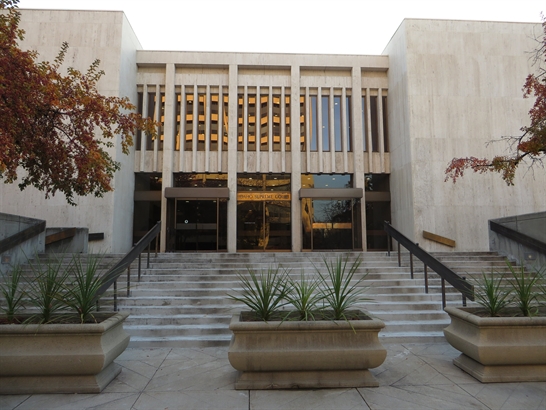Idaho Supreme Court Takes Data-Driven Approach to Court Performance
March 25, 2019 by Melissa Crowe

Photo source: Ken Lund/Flickr
The difference between captured data and usable data is a universal government challenge.
Government organizations — big and small — are grappling with how to take petabytes of information, track it from an administrative standpoint, and efficiently turn it around in sync with the requests from various stakeholders. It’s no minor task.
Kevin Iwersen, CIO of Idaho State Supreme Court said their journey was “a bit of a ‘chicken and egg’ problem.”
The Supreme Court has undergone a revolutionary, technological transition over the past five years from its nearly 30-year-old legacy system. All courts now operate on a common, shared system that provides improved access to court records, greater convenience for court users, better information exchanges with judicial partners, and significant efficiency improvements for court personnel.
However, the court discovered last March, in responding to a data request the Idaho Joint Oversight Legislative Committee, that they needed a more flexible architecture to answer complex questions around court fees and fines. Policy based on the analysis could affect court operations and the revenue courts generate.
“We knew a good portion of the data was available, it just was not easy to report off of,” Iwersen said.

Kevin Iwersen, Idaho Supreme Court CIO
The court tracks more than half-a-million criminal and civil cases annually, in addition to maintaining data on programs and court efficiency. However, its records systems were not designed around extracting and visualizing all of that data for consumers, program leaders, and policymakers.
“The challenge we’ve had is a backlog of data demands since we started the case management project,” Iwersen said. “Everything from being able to clearly identify case load and hearing activity to how well we’re managing guardianship cases and the efficiency and effectiveness of our problem-solving courts.”
With Socrata Connected Government Cloud, an advanced internal data sharing solution, the court gains a real-time update of validated data from its management system, Odyssey. This will provide dynamic dashboards and custom enterprise reports to analyze data and evaluate needs.
From an operational standpoint, court administrators will be able to conduct a side-by-side comparison of courts to gain insights for improvement. The aggregate data can then be released to the public to replace their annual reporting document.
While the immediate focus is on fines and fee data, Iwersen expects to have some successes to report soon. For example, when the court is fully ramped up with Socrata, each judge could potentially have a dashboard to track their metrics on disposition rates, failure to appears, and other case statuses. Beyond these new capabilities, Iwersen’s long-term vision involves leveraging the Socrata platform to build an integrated courts and justice system across Idaho.
“A lot of the big policy questions don’t revolve around courts,” Iwersen said. “They involve corrections, domestic violence groups, health and welfare, education, and more. The power of being able to integrate data into a common hub from these various stakeholders could be a game-changer as we grapple with various policy questions.”
The team’s hope is that Socrata becomes a new hub to bring in datasets from across the community to address bigger challenges.
“We consider this a first step,” Iwersen said.